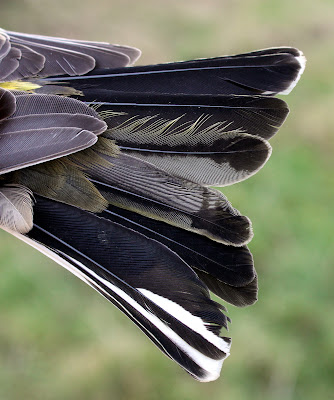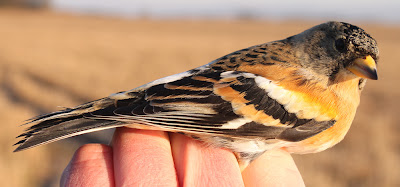Sunday morning was taken up with Fylde Ringing Group’s (FRG) Turnstone Project, the catching and ringing of the local wintering population of those phenomenal ocean wanderers, Ruddy Turnstone, Arenaria interpres.
I met up with the other guys at Fleetwood Marine Lake at 8am, Ian, Seumus, Huw and Graham, all of us keen to have the first go at the Turnstones during this winter. The Turnstones here spend a lot of time mopping up the leftovers of food scraps which local people put out for the now extremely tame wildfowl.
For weeks Seumus and Ian had put out food in a small section of the same grassy area whereby when the opportunity arose, a whoosh net would be set to catch Turnstones alone, and hopefully no meandering Mute Swans or wandering wildfowl.
Turnstone
Everything came good when plenty of Turnstones showed up for a hearty breakfast of chicken feed, resulting in a catch of 31 of the target species plus a few Starlings trying to get in on the act. One Turnstone was a recapture, a bird first ringed 23rd January 2012, and an individual which in the intervening period may have travelled to Iceland or perhaps further, the high Arctic of Alaska or Greenland.
Each Turnstone we catch is now given a standard BTO metal ring, a colour ring, and a coloured leg marker bearing two letters. In this way we hope that wader watchers in Europe and North America will be able to report their sightings to the ringing group. If any readers of Another Bird Blog should see one of these marked Turnstones, they can report it here via the comments section and I will ensure that they receive all information relating to the bird.
FRG Turnstone Project
Leg markers
Turnstone
Turnstone
After the Turnstone catch was processed and completed I took the opportunity for a photograph or two. The lately coming-to-bread Scaup has taken up with a few Tufted Duck and for whatever reason is now less keen to have her picture taken. There were a few Goldeneye and a good number of Redshanks knocking about the two-lake complex, both species adept at keeping their distance from prying lenses.
Scaup and Tufted Duck
Redshank
Goldeneye
The next Turnstone catch should be in January but in the meantime be certain that there will be lots of birds featured on Another Bird Blog, so stay tuned.
During this week Another Bird Blog is linking to I'd Rather Be Birding, Stewart's Photo Gallery, and Weekly Top Shot, so be sure to check them out.




































































.jpg)












